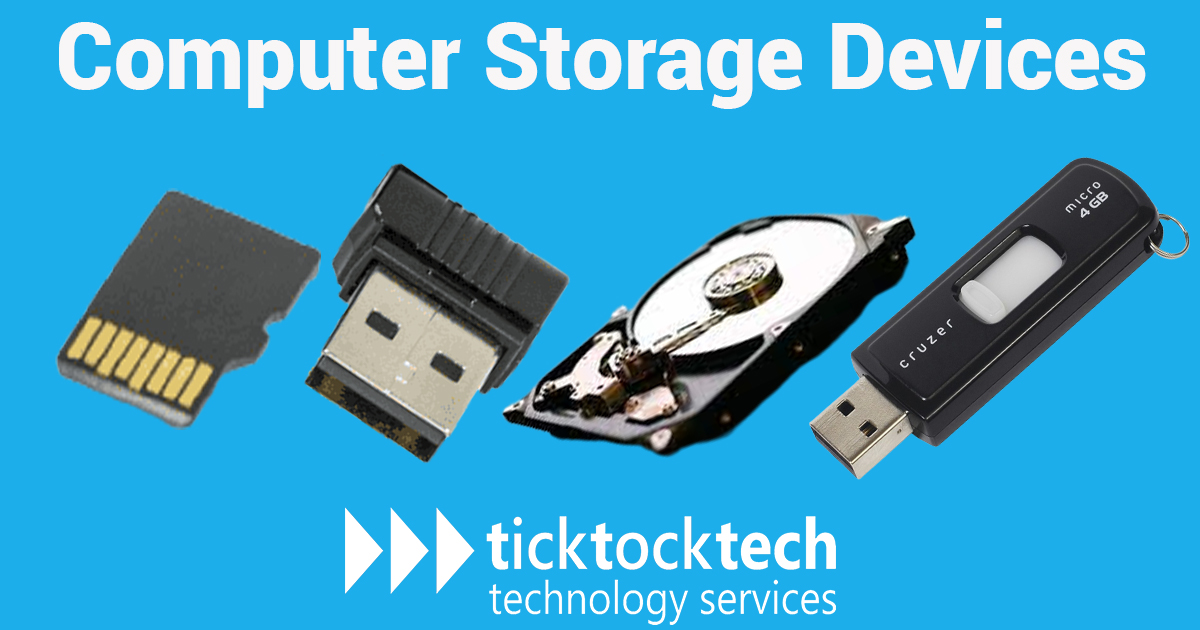Ever wondered how your computer stores data and information? In a related article, we walked you through the 7 Best External Hard Drives In 2022 based on their performance.
In this article, we will enlighten you on the types, examples, and features of computer storage devices. Computer storage devices are hardware components or devices used to store data. Computer storage devices can be classified into two major types:
- Primary Storage Devices
- Secondary Storage Devices
Primary Storage Devices
They are also referred to as internal memory or main memory. Primary storage devices are located on the motherboard of the computer. Primary computer storage devices include:
1. RAM (Random Access Memory)
The RAM is a temporary storage unit of the computer. It is a computer`s short-term memory unit where data used by the processor is stored. Random Access Memory can be classified into SRAM (Static Random Access Memory), DRAM (Dynamic Random Access Memory), and SDRAM (Synchronous Dynamic Random Access Memory).
2. ROM (Read Only Memory)
Unlike the RAM, the ROM is a non-volatile memory that stores data and instructions permanently on your computer. Read Only Memory can be classified into PROM (Programmable Read Only Memory) and EPROM (Erasable Programmable Read Only Memory).
Secondary Storage Devices
These are external nonvolatile storage units that stores data permanently even when there is no power on your computing device. They can be used to migrate data and information from one computer to another. They are used as computer backup storage devices. Secondary computer storage devices are classified into three types:
1. Optical storage
It is a type of storage unit where data and information are stored and read with the use of lasers. Examples of devices that use optical storage are Compact Disc (CD), Digital Versatile Disc (DVD), and Blu-ray Disc.
i. CD (compact disc): The compact disc is a flat, circular plastic disc for storing data and information. The compact disc was the first set of optical storage devices, and they could store up to 700mega bytes of data.
ii. DVD (Digital Versatile Disc): The Digital Versatile Disc is also called the Digital Video Disc. It is a flat and round plastic disc structurally similar to the compact disk except that the DVD is a better upgrade than the CD. A digital versatile disc could store up to 100 times what a compact disc could store. It also provides a better video and audio quality of stored contents than the CD.
iii. Blu-ray disc: Often referred to as Blu-ray, it is structured similarly to the first two generations of optical storage devices; the compact disc (CD) and the Digital Versatile Disc (DVD). It has the ability to store high-definition videos (HDTV) like 720p and 1080p and video games for the play station 3, play station 4, play station 5, Xbox series, and Xbox 1. The Blu-ray optical disc single layer can store up to 25 GB, and the dual-layer can store up to 50 to 65 GB.
2. Magnetic storage
This is a type of storage unit that uses a magnetized medium to store and read data. The main types of magnetic storage devices are Magnetic tape, Floppy disks, and Hard disk drives.
i. Magnetic tape: Magnetic tape is basically divided into magnetic audio tape and magnetic videotape.
Magnetic audio tape is used to capture, store and access audio data type while Magnetic videotape is used for storing video files. Information can be stored in both analog and digital forms.
ii. Floppy disk: The floppy disk which is also known as the floppy diskette is a thin flexible disk enclosed in a hard square-like plastic case. It is a magnetic storage medium used for storing data.
iii. Hard disk drives: They are also referred to as fixed disks or hard drives, and are storage devices used to store and migrate data from one computer to another. A hard drive can store up to 1 Tera byte of data. A hard drive is often used as a backup for the computer.
3. Flash memory devices
It is an electronic storage device that can store and access both audio and visual data types. it is also used to move data from one computer to another. Examples of flash memory used devices are SD cards, Memory cards, and Pen drives.

